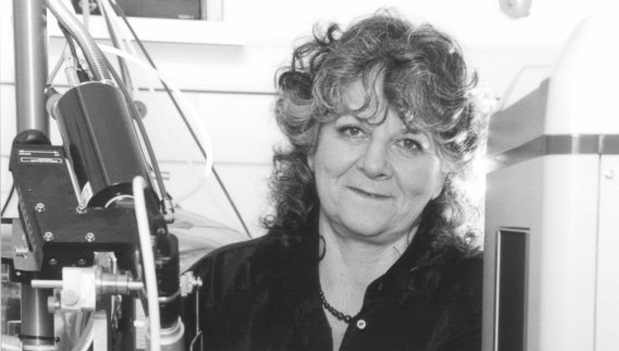Ada Yonath

Dr. Ada Yonath is known for her pioneering work on the structure of the ribosome, in which she won the 2009 Nobel Prize Award for, and developing a crystallography technique known as cryocrystallography.1 Yonath describes her childhood memories as “centered on my father’s medical conditions alongside my constant desire to understand the principles of the nature around me.” She was born in June of 1939 in Jerusalem to a poor household, sharing a four-room apartment with two additional families. Despite the circumstances, her parents strived to provide Dr. Yonath with a good education, and supported her curiosity and intellect.2
At the age of 11, Yonath’s father passed away, and she took on many odd jobs to help support her mother, however it was a difficult time.3 They moved to Tel Aviv in Israel to be closer to their family, where she completed her high school education. Yonath later enrolled in the Hebrew University of Jerusalem, where she received her degree in biochemistry and biophysics. She then carried out her doctoral work at the Weizmann Institute in Israel, where she was studying the high-resolution structure of collagen. After her PhD, she started her postdoctoral work at Carnegie Mellon University, but later moved to MIT where she studied protein staphylococcus nuclease.2
She later returned to the Weizmann Institute in 1970, but this time, as a young researcher with an ambitious plan. Yonath wanted to determine the 3-D structure of a ribosome, a feat not yet accomplished in the field of biochemistry. She would accomplish this using a technique known as X-ray crystallography. This technique involves shooting a material with X-rays, which diffract in different directions and intensities. The scattering of these beams can be measured to elucidate the structure. She describes that this was an endeavor that took close to two decades, and she was faced with negative opinions and ridicule from the scientific community. She stated “I became the World’s dreamer, the village fool, the so-called scientist, and the person driven by fantasies.”2 However, Yonath was motivated and continued with her ribosome research, partnering with Prof. Whittmann at the Max Planck Institute for Molecular Genetics in Germany in mid-1980s. The ribosome is complex of proteins and RNA chains, something scientists dedicated years trying to understand. It was incredibly difficult to form the crystals necessary for X-ray crystallography due to its intricate, flexible, and asymmetric nature.2 She stated that after the first indication of crystals, the potential for structure elucidation was not detected until four years later. Two years after that, they discovered that the irradiation decomposed the crystals.3
However, this lead to what Yonath describes as her biggest contribution to science, the development of cryocrystallography, where protein crystals are subjected to extremely low temperatures of -185 ºC, and therefore are not degraded by the radiation damage.1 Once they published this method, suddenly Yonath and her collaborators were no longer the only ones working on elucidating the ribosomal structure, as others were using the procedures in a parallel effort. Yonath and coworkers were, however, the first to publish the 3-D structures of both subunits of the bacterial ribosome in 2000 and 2001. The gravity of this discovery is important, as the elucidation of this structure paves the path towards understanding how antibiotic drugs work in the ribosomal subunit, giving rise to improving or designing novel drugs.2
Prof. Ada Yonath received numerous awards and honors for her discovery. She was awarded the 2009 Nobel Prize (the fourth female to win this award in chemistry!), the Louisa Gross Horwitz Prize for Biology or Biochemistry in 2005, the Paul Ehrlich and Ludwig Darmstaedter Prize in 2007, and the Albert Einstein World Award of Science in 2008.1 Yonath still is an active principle investigator at the Weizmann Institute, continuing her research to understand the mechanisms of antibiotics and ribosomes. When asked what qualities it takes to be a good scientist she states: “Curiosity, first. Second, curiosity. And third, curiosity!”3
Written by Magenta Hensinger
Edited by Rebecca Bogart
1. Rogers, K. Ada Yonath. https://www.britannica.com/biography/Ada-Yonath (accessed July 28).
2. Ada E. Yonath – Biographical. https://www.nobelprize.org/prizes/chemistry/2009/yonath/biographical/ (accessed July 28).
3. Yonath, A. E., Ada E. Yonath: “The challenge of science is like climbing Mount Everest”. Nolan, C., Ed. The UNESCO Courier.
Recent Comments